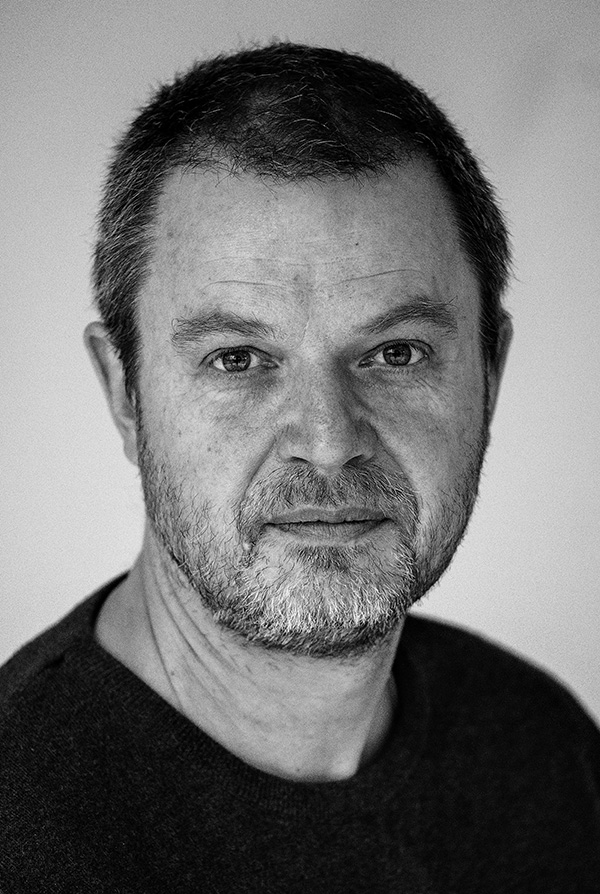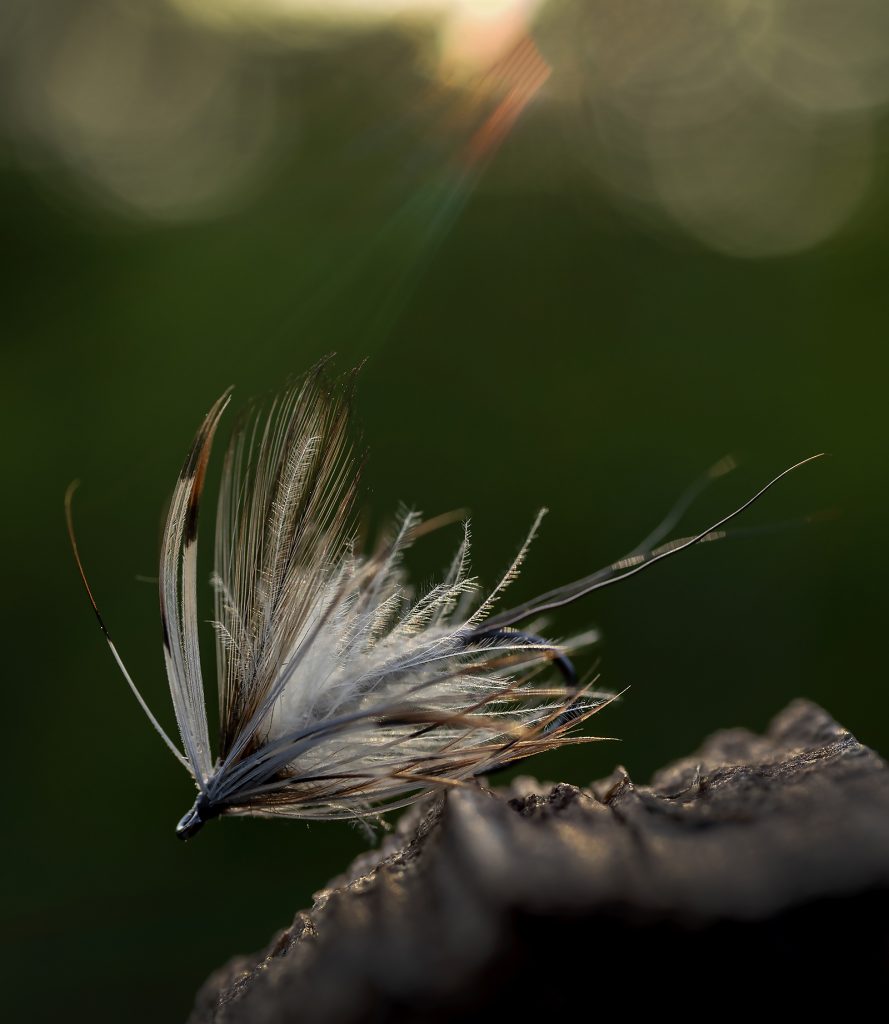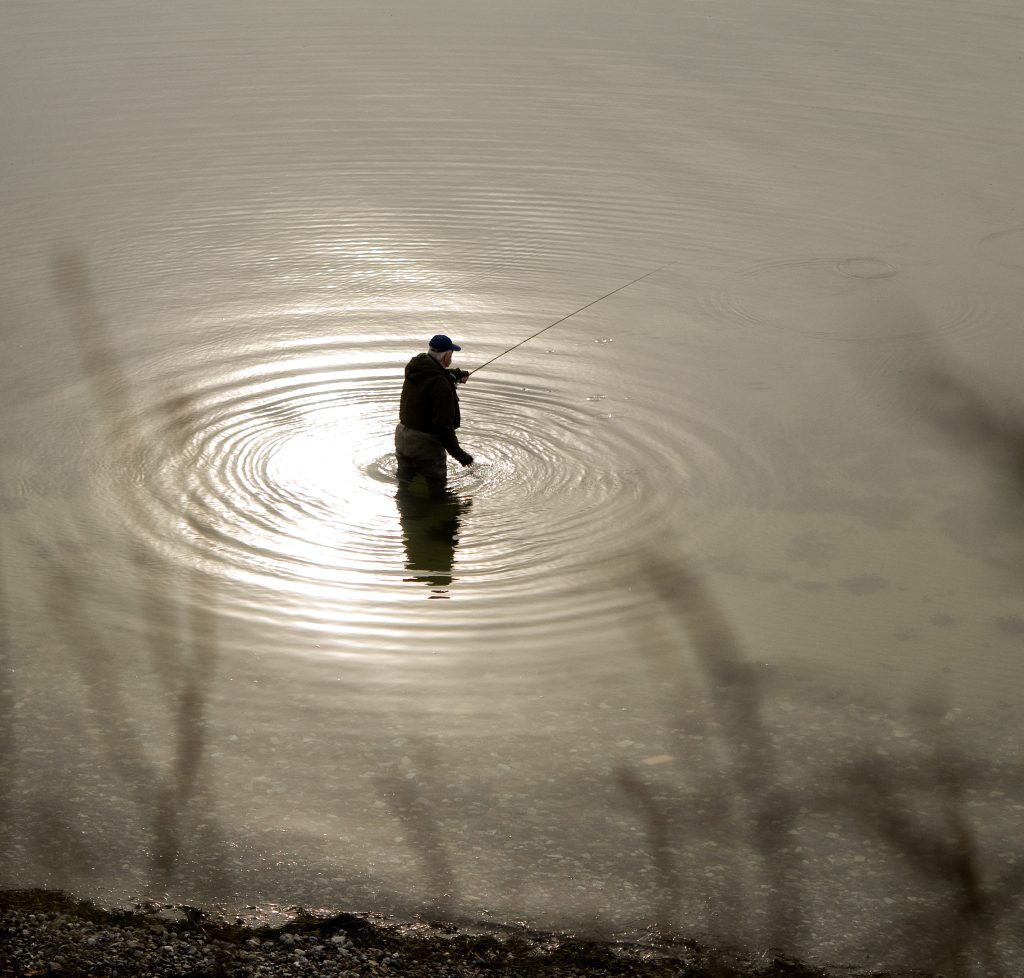
It can sound a little strange but you’ll never hear me say that I love fishing, trout or something like that. To me the phrase love is reserved for human beings, my loved ones. That said, there’s a few things around fishing especially fly fishing and fly tying that are so close to my heart that it resembles love. Sitting in the evening sun with my fishing buddies, they are among my loved ones, catching a strong trout or spending a whole cold winters day in front of my vice, brings me a joy I can’t live without. The latter got a twist. I’m, if not in love, then pretty intrigued by a feather.
- This artickel is written by Danish photojournalist Søren Skarby

Winding a french partridge feather around a hook shank is, to me, like being dragged back into the darkroom. As a photojournalist I’ve been spending an unbelievable amount of time looking at a picture coming to life in the developer. It’s the same feeling I get when I use that feather. Where the feeling comes from is hard to say, but it’s like the small feather changes from a dull looking sparrows dress to something close to a peacock’s spread out tail. The magic is such a strong spell, that I’ve been tying quite a few of the fly French Partridge and never fished with them in a river, where the mayflies sail on the water.

Skating Danica by Fabio Federighi.
The flies rest in a box and one day when I was cleaning up the always expanding mess on and around my fly tying table I found it and sighed. Will the day ever arrive when I’m going to let it land softly on the water and drift to a trout eating mayflies? Since I nearly always fish in saltwater and rivers with the pretty insects dancing over the water are a pretty long drive away, it will not be in the near future. But I can still tie with the captivating feather.

The colour of the feather spells autumn in saltwater. Exploring my small jungle of all kinds of fly tying materials I found what I thought could be assembled to a pretty nice fly. The french partridge feather is so soft that it will collapse in the tidal current, even with a strong hackle behind it as support. But in the autumn, when the trout starts migrating to the rivers, there are places where the delicate feather will wave tempting fished slowly. Combining the feather with classic materials like hare ears dubbing, partridge for the tail and a brown palmer hackle made it turn out pretty good. Using a fluo orange tying tread and some flash for rib gave the fly a modern salty look that, when I had eyed it for a few minutes, made me tie a few more.

The Bricklayer called me and just said rising tide from the morning. We didn’t have to talk about where because we both knew. It’s a place with a very muddy seabed. You have to be careful where you stand for a long time since your wading boots get sucked down in the mud. That’s the disadvantage, but it’s easy to get there and you just have to step out of the car and down in the water. And most important, there’s fish, but only at rising tide. As soon as the tide culminate they all swim away.
Looking at the water drinking the first cup of coffee we could see small boils on the surface, the sea was like a mirror. ”They are moving in”, said The Bricklayer, ”We better get started.” We climbed down a steep brink to the water and started to search for a place where the seabed was not too soft. Casting with a fly rod and keeping your balance on a seabed like that can be demanding but it can be done. Another challenge was the still sea. It’s common knowledge that fly fishing in such conditions is nearly impossible. The fly line landing on the water will scare the fish. I don’t care about common knowledge and think as if I’m fishing in my childhood stream making the line land as if it’s spiders silk.
It’s a waiting game. Standing there I could feel the mud dragging me down but I paid most attention to boils on the water. The first ones were too far away but then a fish gave itself away close to the
thick cover of reed at the shore. I made the cast as soft as I could baptising my new fly. After two very slow strips the fly was taken by the fish. When I had it in my hand I looked at the colours of the trout matching the fly and the fading leaves of the forrest behind us. Sighing jubilantly I released the fish.

The following winter I willingly jumped into a rabbithole full of intruders. The thought that kicked me down in the hole was rather simple; If you can fish for steelhead with intruders in big rivers why shouldn’t they work on my local trout in the tidal current? The other argument was that I find intruders fascinating and fun to tie. When I told The electrician about my idea he gave me a box full of Waddington shanks in nearly all sizes. I went shopping for some wire and hooks and was ready to give a go at my vice.
The really fun part of tying intruders is that there’s no limit or conventions, just let your fantasy roll over the hills. After a long expedition on shelves and in drawers I produced a pile of materials. One of the given things was that I at last could use those long soft heron feathers that I laid my hands on many years ago. It was pure fun and a small family of flies was soon laying side by side. But there’s a side effect to tying intruders that I learned at the same time.
When you tie a lot of flies for saltwater you often brush the materials back on the hook with two fingers. It’s a movement I do without thinking of it. Doing the same on an intruder is like sack hopping in a minefield, the loose hanging hook will get you. The blood on the table is a testamonial to it, a painful lesson.
As it often happens the first batch of flies were kicked out after they’ve been on display on the table for some days. I’ve got a habit of letting new flies do so and then return to see if I’m still satisfied, I wasn’t. Being back behind the vice I created a simple rule for tying intruders. The only materials I was going to use were hackles, nothing else. The heron feathers were first choice together with some black ringneck and big mallard feathers. I’ve got the latter in several colours. But there was missing something, a little magic dust. My eyes fell on the box with french partridge flies and then I knew.
When the dust settled and my bottle of scotch were not so full anymore there were a dozen flies sitting in a box. The only difference in between them were the colour of the mallard feather. Pink for winter, natural for spring, yellow for summer and a discreet brown for those lazy trout in the autumn, the flies looked good together. Time to go fishing.

The small reef with gravel bottom looked good. I sat down and while the coffee were getting ready I rigged my rod. Cup in hand I watched the tidal current running in the direction I prefer. I had no excuse at all with a perfect wind. The fly was dipped to get it wet and fast sinking and standing on the beach I made my first cast. Well, you can’t really call it a cast since it was so short that I didn’t use more than a few feet of the running line. After dragging more line of the reel I striped the line to get ready to make a real cast. When I lifted the rod the hook was stuck in something, or so I thought.
Things turned pretty serious in a fraction of a second, but in the low water the fight was soon over and 25 inches of the finest silver ended in my landing net. After releasing the fine spring trout I had to make coffee again to let what had just happened in. For the second time the pretty little feather had given me a fish in first cast. I’m not in love with it, but it’s damn close.

